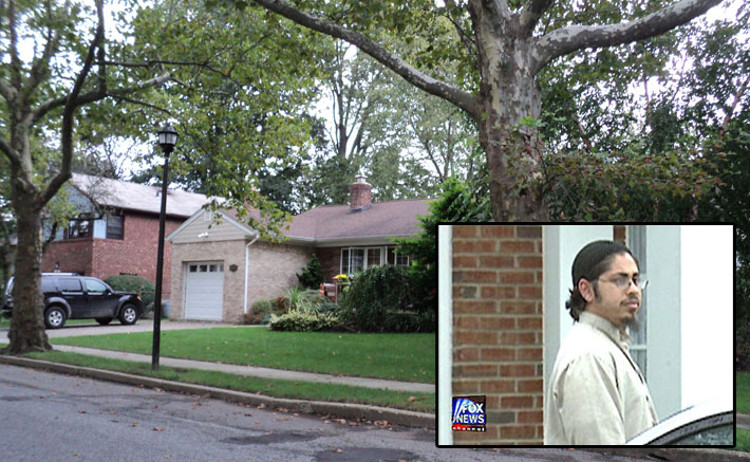After a long legal battle, a reluctant Obama administration this week released a redacted version of the so-called drone memo, which green-lighted a planned intelligence operation to kill Anwar Al-Awlaki, a U.S. citizen who allegedly became the leader of an al-Qaeda offshoot in Yemen and, according to government officials, posed a “continued” and “imminent” threat to America—those details, however, were either redacted or left out altogether.
The July 16, 2010 memo, written by then-Acting Assistant Attorney General David Barron, gave the Obama administration legal justification to take out Al-Awlaki. Barron argued that because of Al-Awlaki’s alleged leadership role within al Qaeda in the Arabian Peninsula, an American operation culminating in his death would not constitute murder.
Specifically, killing a U.S. citizen was lawful, according to the memo, largely due to the “public authority justification,” which allows a government official to lawfully take lethal action, and the 2001 Authorization to use Military Force Act (AUMF), enacted after Sept. 11, which gives the president sweeping powers to either detain or kill enemy combatants away from declared war zones sans an indictment or trial.
The drone strike that eventually killed Al-Awlaki while he was driving in the Yemeni province of al-Jawf came 13 months after the memo was written. Samir Khan, a purported al Qaeda propagandist who spent his teenage years in Westbury and was traveling with Al-Awlaki, was also killed in the Sept. 30, 2011 attack. The Obama administration has said that Khan was not specifically targeted. Al-Awlaki’s 16-year-old son was killed in a separate drone strike two weeks later. He also wasn’t targeted, the government has claimed. They are the only three U.S. citizens that the government has acknowledged killing in drone strikes.
While civil and human rights groups said the release sheds more light on the government’s legal justification for killing a U.S. citizen, and characterized it as long overdue, they still lamented that important questions remain unanswered.
Brett Max Kaufman, a national security fellow and attorney for the American Civil Liberties Union, called the release an “important victory for transparency” on the organization’s website. But, he said, “it still does not answer many key questions about the government’s claimed authority to kill U.S. citizens outside of active battlefields.”
“This step falls far short of what is required to ensure transparency and legality in the ‘targeted killing’ program,” said the human rights group Amnesty International. “As far as we know, only a handful of the hundreds of people killed in drone attacks and similar strikes have been U.S. citizens. And we know too little about the basis in international law for the deliberate use of lethal force in these hundreds of killings, let alone the evidentiary basis for targeting these individuals.”
The Obama administration was under court order to release a redacted version of the memorandum by the U.S. Court of Appeals for the Second Circuit in response to two separate Freedom of Information Act suits filed by two reporters for The New York Times and the ACLU, which were later combined. The government had fought hard to prevent the release.

While much of the memo is redacted and does not contain operational details or the “facts represented” to the Office of Legal Counsel, it does for the first time publicly acknowledge the CIA’s role in drone strike operations.
“The Second Circuit’s opinion, and the release of the OLC memo, finally put to rest the government’s longstanding fiction that the operational involvement of the CIA in the government’s drone program was a state secret,” Kaufman said in an email to the Press. “Now that the courts have officially affirmed what the rest of the world already knew, we’re hopeful that the ruling will lead to further disclosures about the CIA’s role in the program and about crucial factual information, like numbers of civilian casualties caused by the program.”
Justification
The memo focuses exclusively on Al-Awlaki, who was born in New Mexico in 1971 and raised three children in the United States, until the family moved to Yemen in 2002.
The government has previously said Al-Awlaki conspired with Umar Farouk Abdulmutallab to blow up a Detroit-bound airliner on Christmas Day 2009 that was carrying 289 passengers, according to court documents in the case.
Referring to Al-Awlaki, Barron writes: “The targeted individual himself, on behalf of that force [al Qaeda in the Arabian Peninsula], is continuously planning attacks from that Yemeni base of operations against the United States, as the conflict with [al Qaeda] continues.”
While summarizing how the AUMF “clearly” authorizes the president to use “necessary and appropriate” force against al Qaeda, Barron writes: “a decision-maker could reasonably conclude that the AQAP forces of which [Al-Awlaki] is a leader are ‘associated with’ [al Qaeda] forces for purposes of the AUMF.”
The memo also essentially says the government is free to conduct operations in countries that the United States is not at war with, thus allowing the military to strike Al-Awlaki in Yemen.
“We do not believe [Al-Awlaki’s] citizenship provides a basis for concluding that he is immune from a use of force abroad that the AUMF otherwise authorizes,” Barron concludes.
The redacted memo does not disclose details regarding operations planned by the Department of Defense or the CIA, but it does reveal that the DoD said it would capture Al-Awlaki if he offered to surrender. But earlier in the memo, Barron notes that the DoD planned to target him without “advanced warning.”
It later states: “both agencies here have represented that they intend to capture rather than target [Al-Awlaki] if feasible; yet we also understand that an operation by either agency to capture [Al-Awlaki] in Yemen would be infeasible at this time.” Barron does not elaborate on the DoD and CIA’s position.
As for Khan, who was the editor of the al Qaeda publication Inspire, and Al-Awlaki’s 16-year-old son Abdulrahman, they have both been characterized as “bystanders.”
Both families recently sued government officials for the drone strikes, but lost.
“I believe that my son and 16-year-old grandson were unlawfully killed by their government, and for a long time, I had faith that an American court would decide whether the killings of at least these American citizens violated the U.S. Constitution’s guarantee of due process,” Al-Awlaki’s father said in a statement through his lawyers.
When considering how the Al-Awlaki operations complied with international laws of war, Barron noted that the DoD said it would “make every effort to minimize civilian casualties and the officer who launches the ordinance would be required to abort a strike if he or she concludes that civilian casualties will be disproportionate or that such a strike will in any other respect violate the laws of war.”



























